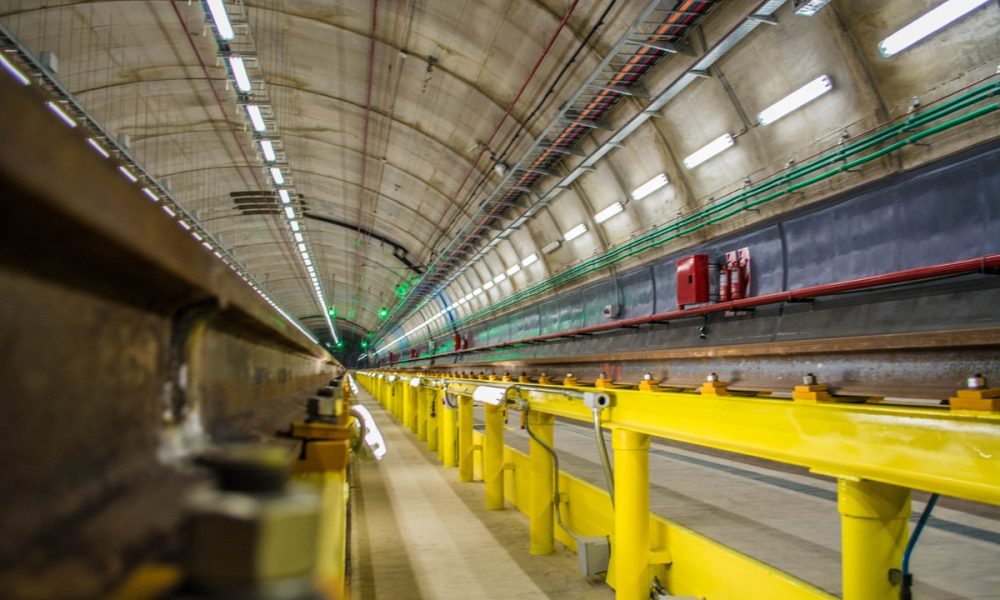Bridge or tunnel? That is the question that Florida leaders and legislators have been debating for two years in what has become a contentious and divisive concept. At issue is how to best replace the current New River drawbridge used by Florida East Coast Railway and Brightline trains. The drawbridge has been in place for years and can be raised up to allow boat traffic. But with increased traffic due to Brightline’s operations in Orlando, and new commuter rail operations on the horizon, it is becoming a problem for marine traffic.
Last December city commissioners attempted to resolve the issue with a conditional decision by voting 3-2 to build a train bridge over the river if a tunnel was too expensive. The ongoing battle for the future of commuter traffic in South Florida had come to a head when Fort Lauderdale mayor Dean Trantalis sent out an email decrying the new bridge and calling for a tunnel to be built. In opposition, county commissioners wanted a bridge, for which the estimated cost was $500 million while the cost for the tunnel was an estimated $3 billion.
Despite the tunnel’s much higher price tag, several business interests had signaled their support for the tunnel, including the Fort Lauderdale Chamber of Commerce, the Broward Workshop, and the Downtown Development Authority.
Fort Lauderdale Mayor Dean Trantalis’ position was that there are other more pressing concerns to consider beyond the tunnel’s $3 billion cost, from the proposed bridge’s economic development impact, to traffic flow and quality of life issues such as aesthetics and noise.
Are Tunnels the Future of South Florida Transit?
The New River tunnel wasn’t the only train-traffic tunnel proposed in South Florida. There was also a plan for a three-mile underground commuter rail tunnel running from Fort Lauderdale’s Northeast 13th Street south to Davie Boulevard. This tunnel was designed to allow more trains to pass through the city without delaying street and water traffic. Trantalis, along with Broward County Vice Mayor Michael Udine had been in talks with Elon Musk’s The Boring Company to discuss building the project. Boring had estimated that project could cost up to $220 million.
Florida is No Stranger to Tunnels
Tunnels aren’t a new idea. Florida has been making use of them for a long time. The Port of Miami Tunnel is almost 4,200 feet long and runs underwater beneath Biscayne Bay, connecting the MacArthur Causeway on Watson Island with Dodge Island’s Port of Miami. Around 7,000 vehicles make use of it each weekday. Construction began on May 24, 2010, and the tunnel opened on August 3, 2014. It is the longest tunnel in Florida.
The Henry E. Kinny Tunnel is a highway tunnel that extends U.S. Route 1 underneath the New River and Las Olas Boulevard in downtown Fort Lauderdale. It replaced the Federal Aid Highway Bridge, a drawbridge in operation from 1926 to 1958. Until the Port of Miami Tunnel opened in 2014, it was the only public tunnel in Florida. Walt Disney World Resort operates a pair of private tunnels. The Henry E. Kinny Tunnel in Fort Lauderdale was built by Providence-based Thorington Construction Company and finished in 1960.
Henry Tunnel Rehabilitation Experienced Delays
Drivers who make use of the Henry E. Kinney tunnel for the past two years have had to endure numerous construction-related headaches. The city recently updated citizens to inform them that rehab on the tunnel, which was supposed to be completed last December, has been pushed back to sometime early next year.
The tunnel is undergoing a $28.4 million reconstruction to upgrade the its structural, electrical, and safety components. The project also includes construction of a pedestrian plaza on top of the tunnel, which will include seating, fountains, landscaping, art, and a new intersection at Las Olas Boulevard and Southeast Sixth Avenue.
Progress on the project was delayed by weather and material shortages. The tunnel flooded during the record rainfall the region experienced last April.
During construction, southbound U.S. 1 traffic was diverted to the northbound tunnel, with one lane going in each direction. The traffic pattern was swapped during the summer, with northbound U.S. 1 traffic feeding into the southbound tunnel.
If your next land use project requires legal oversite, contact David E. Klein, Esq. and Guy Rabideau at Rabideauklein.com. They are Florida Bar Board Certified in Real Estate Law and have the expertise and experience you need to ensure that your interests are protected in South Florida’s tri-county region, and across the state. Contact Rabideau Klein today to discuss the legal implications of your next Florida property initiative.

